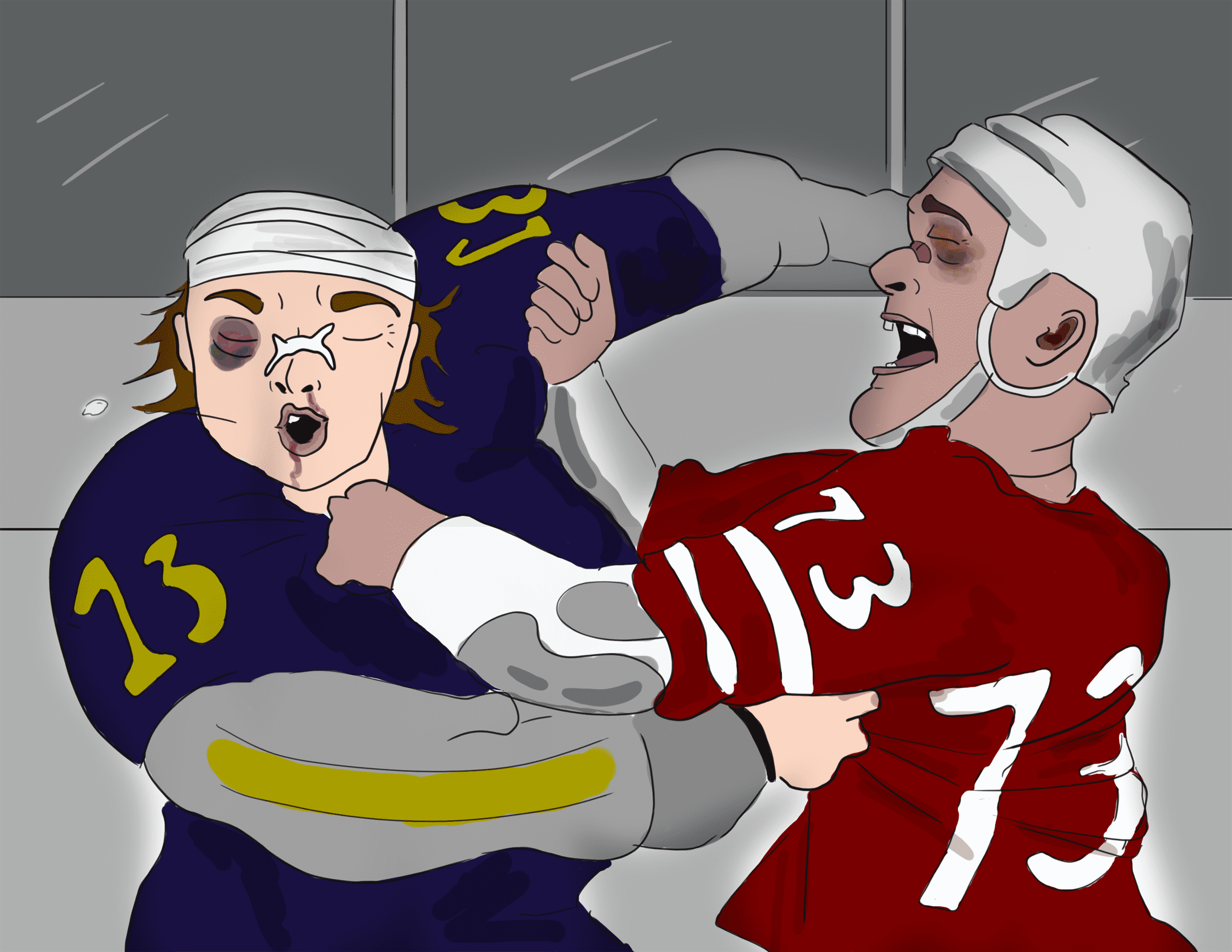With both men’s and women’s soccer coming off another strong season, the men’s hockey team making the playoffs and both lacrosse teams beginning their spring campaigns, contact sports continue to be popular and successful at Montclair State University.
Although contact sports are a large part of college campus life and school spirit, is the risk of head injuries that can lead to permanent damage worth it?
According to a study performed by the Journal of Athletic Training, an estimated 300,000 sport-related traumatic brain injuries, predominately concussions, occur annually, making sports the second leading cause of such injury among people ages 15-24.
Participation in sports is deeply ingrained into American youth culture. From the moment they are able to do so, toddlers are signed up by their eager parents to join T-ball teams and recreational soccer leagues.
It is not too long before sports like Pop Warner football, lacrosse and street hockey come into the mix and children are exposed to the potentially lethal long term effects of contact sports.
Youth sports are so prolific in American culture because of the vast range and proclivity that they carry in the culture as a whole. Similarly to how participating in sports is an institutional part of American culture, violence is an institutional part of sports.
Violence in sports draws crowds, boosts television ratings and generates immense monetary profits for athletes, franchises and television networks alike. Violence is an inherent aspect of sports like boxing, American football, hockey and mixed martial arts (MMA), but more and more fans are being turned off by the aggressive and dangerous nature of such tradition, and for good reason.
The ever-growing knowledge of permanent brain damage like chronic traumatic encephalopathy (CTE), a seemingly unavoidable consequence of participating in these kinds of violent sports, has led to a lack of participation at the youth level, a decrease in viewership and constant rule changes to make the sports less dangerous and more player-friendly.
Participation in youth sports does have many benefits, however. Youth sports can teach developing children basic social skills, how to be a good teammate and how to deal with competition and failure, but these life skills can just as easily be taught without kids setting themselves up for a lifelong sentence of head trauma.
Despite these known risks, sports like boxing or MMA should not be discontinued because of their violent nature. The athletes who compete in boxing and MMA are strategists. Every move they make is highly calculated.
An estimated 20% of boxers suffer from CTE. Although that number is certainly concerning, it is definitely low for a sport where the entirety of the time spent competing, punches are being thrown at you from some of the strongest people on the planet.
However, a sport like football, while a contact sport, does not require direct, malicious acts of violence. In fact, intentional acts of violence are illegal and are met with penalties.
Regardless, upwards of 90% of NFL players suffer from CTE after their careers. A number far too high for a sport where an act that causes concussions is not allowed.
Violence remains ever-present in sports culture, contributing to long term effects and permanent brain trauma. Although participation in sports at the youth level does have its benefits, those benefits can be found elsewhere, absent from concussions and long term, potentially life-threatening brain trauma.



